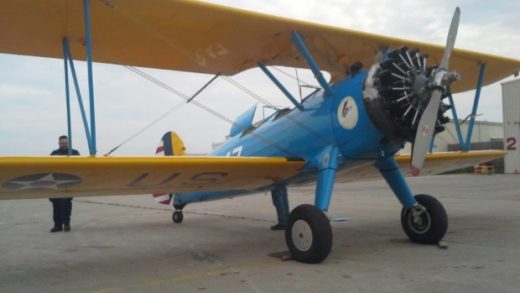 Scroll Down to see all of this week’s updates
Scroll Down to see all of this week’s updates
Airbus C-295 New SAR Platform

The federal government has chosen the Airbus C-295 at the RCAF’s new fixed wing search and rescue (FWSAR) aircraft, replacing decades old Buffalo and C-130 aircraft.
Defence Minister Harjit Sajjan and Procurement Minister Judy Foote will announce details of the $3 billion deal at CFB Trenton on Thursday.
The Airbus was widely reported to be one of two serious contenders for the contract. The Leonardo C-27 Spartan, which was considered a favourite, was also the subject of controversy because of allegations the RCAF was pressuring the government to buy it.
Embraer was a late entrant to the race with its new KC-390 twinjet but it wasn’t considered a viable option because the program is still under development and the RCAF wanted a mature platform.
Last year Viking Air, of Victoria withdrew a bid to build new, modernized Buffaloes, citing bid requirements it was not prepared to meet.
The C-295 is a twin-turboprop originally designed as a tactical transport. It’s powered by Pratt & Whitney Canada PW100 engines and cruises at about 260 knots. It’s based on the Spanish CASA CN-235 and costs about $35 million CAD.
It’s not clear how many aircraft Canada will buy for its $3 billion, which includes 20 years of maintenance and parts support. The original bid was for 17 aircraft but the government changed the bid requirements to allow companies to recommend the appropriate number of aircraft to do the job.
Stearman Seized

A Woodstock, Ontario man is facing charges after allegedly smuggling a Stearman into Canada from the U.S.
The man landed the vintage biplane at Sarnia Chris Hadfield Airport on Oct. 12.
The Canada Border Services Agency claims the man told border guards he bought the aircraft in Canada. But CBSA officials found documents saying the man bought the plane in the U.S. for $110,000.
The plane has been seized by Customs and could end up being sold in a government auction if the charges against the owner are upheld.
Manual De-icing Surprises Passengers

De-icing is a fact of life in Canada’s North but when the de-icing machine broke down in Cape Dorset, Nunavut last week, airline officials had no choice but to break out the mop and bucket.
Canadian North said manual application of the de-icing fluid is approved by Transport Canada and other aviation agencies as long as it’s done properly.
The airline’s sprayer broke and parts had to be ordered so rather than disrupt the schedule, airline staff took to ladders with the mops.
“You always have to have back-up procedures in case a piece of equipment breaks,” Canadian North spokesman Kelly Lewis told the CBC. “So this is a safe way of doing it as long as it’s done thoroughly, which our employees are trained to do.”
Besides being more time consuming, the manual method also uses more fluid. The parts for the sprayer arrived earlier this week and the usual method of de-icing has resumed.
